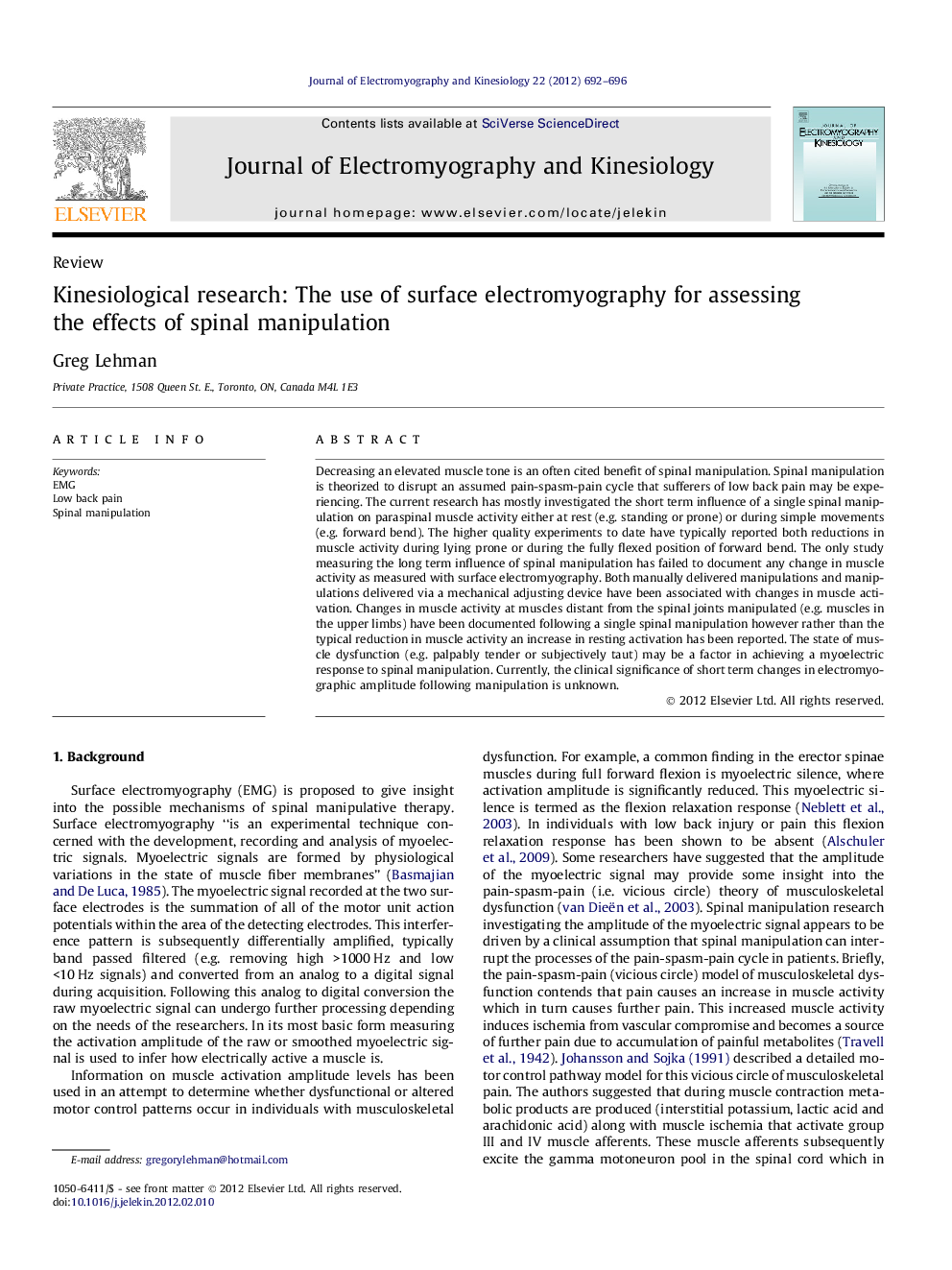| Article ID | Journal | Published Year | Pages | File Type |
|---|---|---|---|---|
| 4064714 | Journal of Electromyography and Kinesiology | 2012 | 5 Pages |
Decreasing an elevated muscle tone is an often cited benefit of spinal manipulation. Spinal manipulation is theorized to disrupt an assumed pain-spasm-pain cycle that sufferers of low back pain may be experiencing. The current research has mostly investigated the short term influence of a single spinal manipulation on paraspinal muscle activity either at rest (e.g. standing or prone) or during simple movements (e.g. forward bend). The higher quality experiments to date have typically reported both reductions in muscle activity during lying prone or during the fully flexed position of forward bend. The only study measuring the long term influence of spinal manipulation has failed to document any change in muscle activity as measured with surface electromyography. Both manually delivered manipulations and manipulations delivered via a mechanical adjusting device have been associated with changes in muscle activation. Changes in muscle activity at muscles distant from the spinal joints manipulated (e.g. muscles in the upper limbs) have been documented following a single spinal manipulation however rather than the typical reduction in muscle activity an increase in resting activation has been reported. The state of muscle dysfunction (e.g. palpably tender or subjectively taut) may be a factor in achieving a myoelectric response to spinal manipulation. Currently, the clinical significance of short term changes in electromyographic amplitude following manipulation is unknown.
